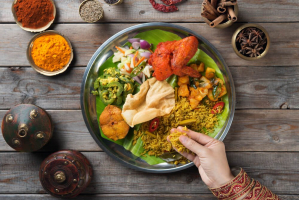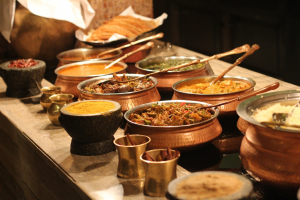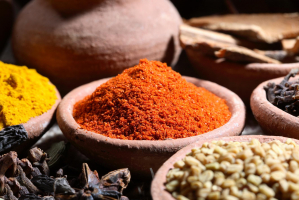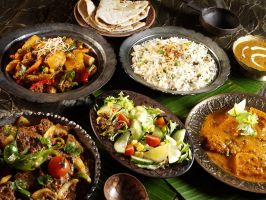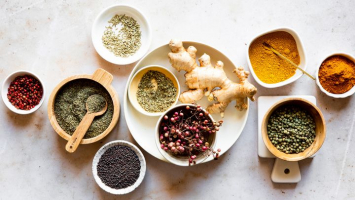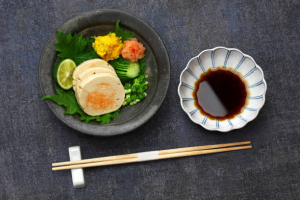Top 10 Most Famous Indian Spices
When it comes to Indian spices, nothing compares to their variety and excellence. Indian spices are well-known throughout the world for their exquisite flavor ... read more...and profound emotional impact on every dish. Do you want to know more about Indian spices? Here is some basic information regarding the most famous Indian spices that you might be interested in.
-
Garlic, a bulbous gem of the onion family, emits a strong perfume and enlivens the taste with a fiery zest that changes with cooking. Garlic has a dominant presence in Indian cuisine, particularly in the northern and western areas, where it mingles with a variety of other spices such as ginger, turmeric, cumin, coriander, and chile, resulting in sophisticated and delightful spice mixtures.
Garlic, in addition to its culinary importance, is woven throughout the tapestry of Indian culture and history. Its revered reputation as a sacred and therapeutic plant can be seen in ancient books such as the Vedas and the Mahabharata. Garlic is also associated with a variety of religious ceremonies and celebrations.
Garlic, for example, is offered as an offering during Navratri, a nine-day celebration commemorating Goddess Durga's victory over malevolence. Similarly, on the last day of Diwali, the festival of lights, garlic is consumed to ward off evil spirits. Garlic takes center stage as either a major or secondary spice in the pantheon of renowned dishes, demonstrating its ability in concoctions such as garlic naan and garlic-infused chicken.
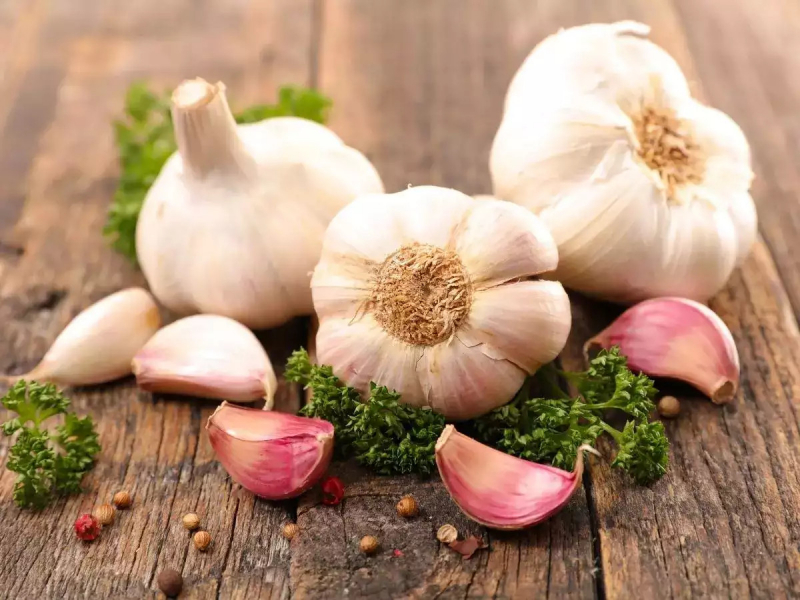
Image via Pinterest 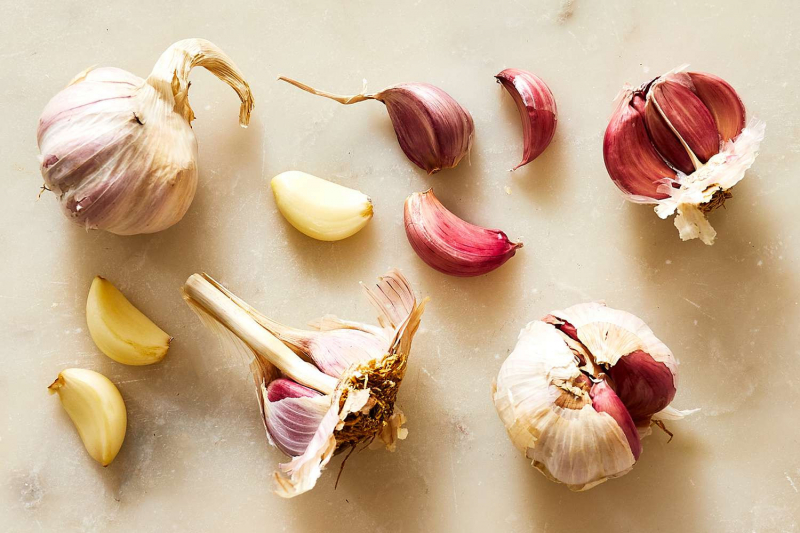
Image via Pinterest -
Fresh ginger is the classic ginger variety in Indian cooking. It has a lively and stimulating sapor that blends well with a variety of spices such as garlic, turmeric, cumin, and coriander. Fresh ginger, often grated or chopped, is used in marinades, curries, stir-fries, soups, and chutneys. It can also be sliced and soaked in boiling water to make a relaxing ginger tea, which is a cure-all for colds and sore throats.
Ginger, with its piquant, fiery, and slightly saccharine essence, imparts a fervent ardor and profoundness to every culinary creation. Ayurvedic medicine harnesses the all-encompassing properties of ginger, promoting improved digestion, fortified immunity, and relief from the throes of nausea.
Ginger, one of the most versatile spices in Indian cuisine, has the amazing capacity to boost the taste of any dish with its inimitable fragrance and flavor. Ginger chicken, Ginger garlic fish, Ginger carrot soup, and Ginger halwa are just a few of the legendary meals that display ginger's ability.
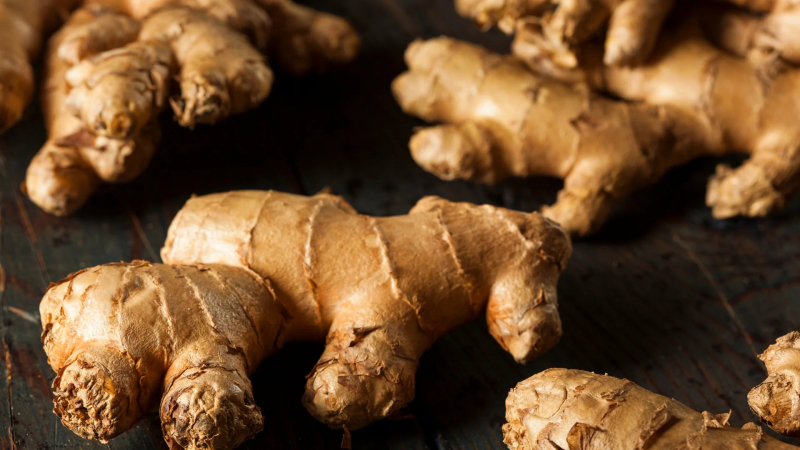
Image via Pinterest 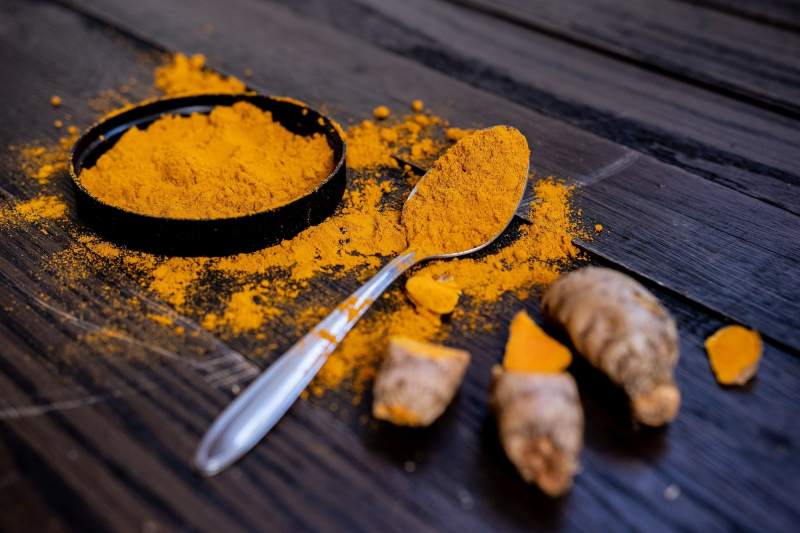
Image via Pinterest -
Turmeric has been used for millennia in India to add a vibrant yellow tint to various culinary dishes. Turmeric, a member of the ginger family, is a therapeutic herb rich in antioxidants, anti-inflammatory compounds, and antibacterial properties. Its strong essence stimulates digestion, improves skin health, and boosts immunity.
Turmeric is a key ingredient in many Indian dishes, particularly in the north and west, where it adds a distinct warmth and earthly taste to curries, lentils, rice, vegetables, and even sweets. Its delicate sharpness balances the sweetness of other spices, and its enticing perfume entices and allures. Dal Tadka, Aloo Gobi, Chicken Tikka Masala, and Kheer are some of the most well-known turmeric-infused meals.
Turmeric is widely regarded as one of the most famous Indian spices, owing to its flexibility, flavor, and several health advantages. Its transformational ability transforms every dish into a delightful and healthful masterpiece, symbolizing the variegated fabric of Indian culture.
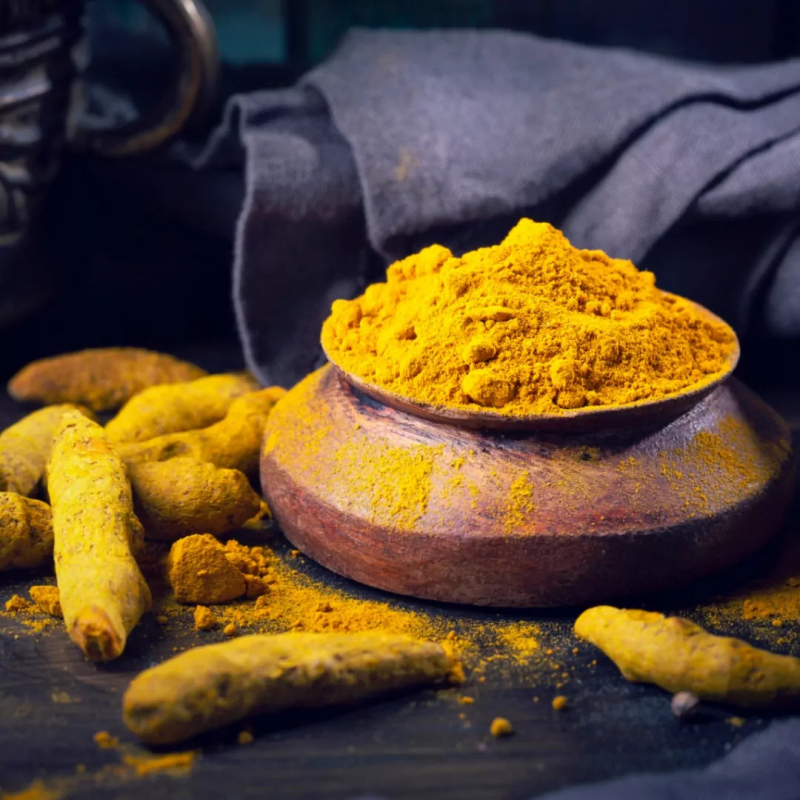
Image via Pinterest 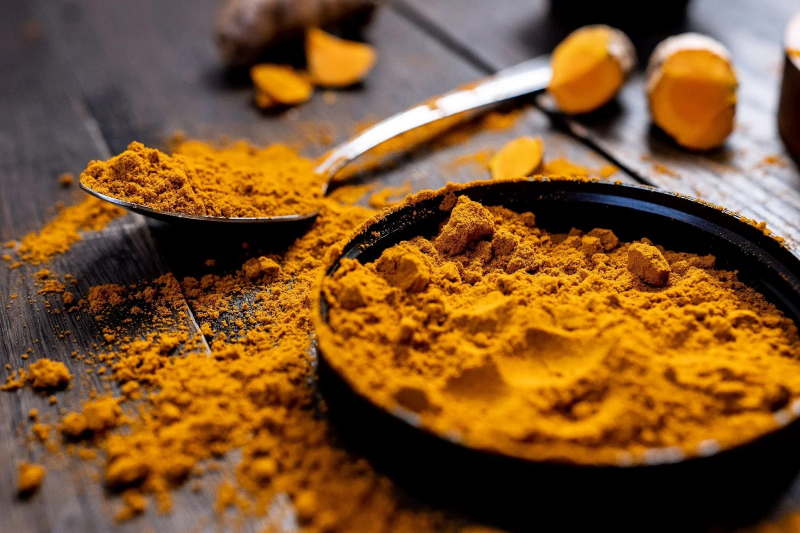
Image via Pinterest -
Cumin has a flavor that is warm, earthy, and slightly bitter, and it adds depth and variety to any dish. Cumin is widely utilized in Indian cuisine, ranging from curries and dals to chaats and biryanis. It is also a key component in many spice blends, including garam masala, curry powder, and panch phoron.
In India, cumin has a lengthy history and cultural significance. It is mentioned as one of the spices that purify the body and mind in the ancient Vedas. It has also been linked to digestion, immunity, and fertility. Cumin is frequently roasted or fried before being added to meals to improve its aroma and flavor. It can also be pounded into a powder or eaten intact. Cumin is used in a variety of cuisines, including Jeera rice, Aloo jeera, Jeera chicken, and Jeera raita.
Cumin is a versatile spice with a distinct flavor and scent that can improve any Indian cuisine. It is also a spice with numerous health advantages and cultural significance.
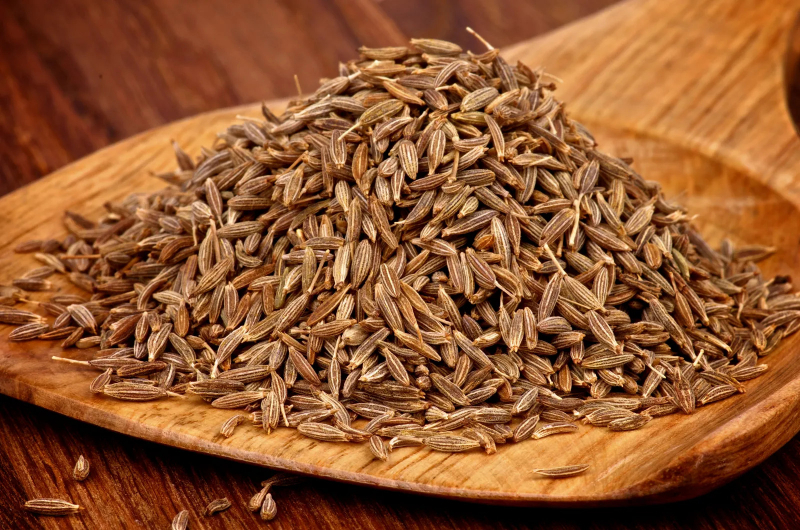
Image via Pinterest 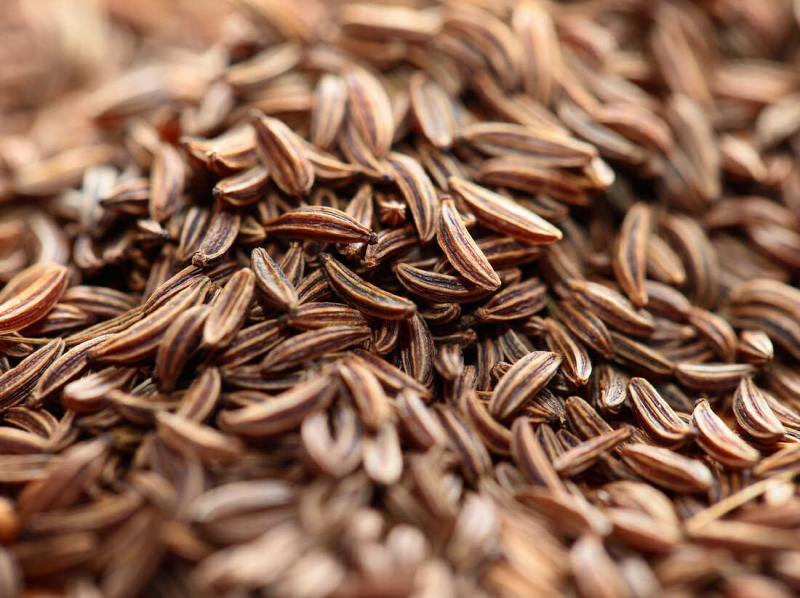
Image via Pinterest -
Piper nigrum, or black pepper, is native to India's Western Ghats, where it has been farmed for thousands of years. Ancient civilizations such as the Greeks, Romans, and Arabs valued it and traded it through the spice routes. It was also employed as a medicinal, a preservative, and a medium of exchange. In fact, black pepper was so expensive that it was dubbed "black gold" at times.
The chemical component piperine gives black pepper its particular pungent and spicy flavor. From soups and salads to curries and biryanis, it may improve the flavor of practically any food. It can also bring fire, contrast, and complexity to sweet items like sweets and drinks. To retain the scent and flavor of black pepper, it is normally put at the end of cooking or as a finishing touch.
With its distinct flavor and scent, black pepper can enrich any food, making it more healthful and enjoyable. Whether you use whole peppercorns, freshly ground pepper, or pre-ground pepper, every bite will have a flavor of India.
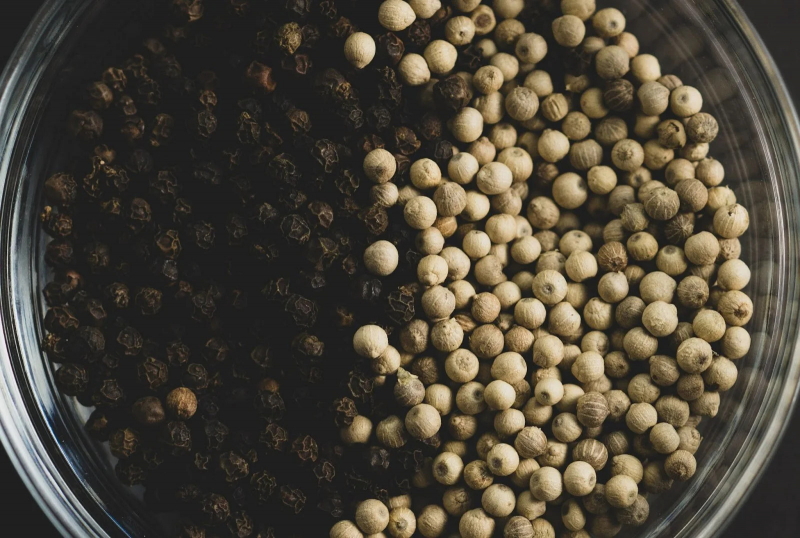
Image via Pinterest 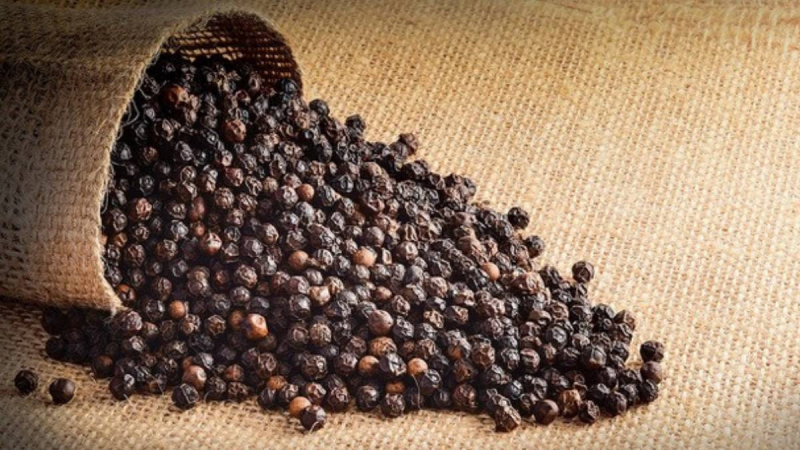
Image via Pinterest -
Cardamom is native to India, where it has been maintained and tended for millennia. It is a member of the ginger family and grows in clusters of pods on a plant with elongated foliage. The pods are harvested before they mature and then desiccated to preserve their exquisite essence and enticing aroma.
Cardamom is widely used in Indian cuisine, notably in the southern and western areas. It plays an important role in a variety of spice blends, including garam masala, curry powder, and chai masala. Furthermore, it contributes its flavor to confections like kheer, halwa, and kulfi. Cardamom has the ability to improve both savory and sweet dishes, adding a touch of grace and refinement. Biryani, Korma, and Kulfi are some of the most well-known Indian cuisines that incorporate cardamom.
Cardamom offers more than just flavor, it also has a number of health benefits. It promotes digestion, fights halitosis, and relieves colds, coughs, and headaches. It can also energize the spirit and increase energy levels, resulting in a general sense of well-being.
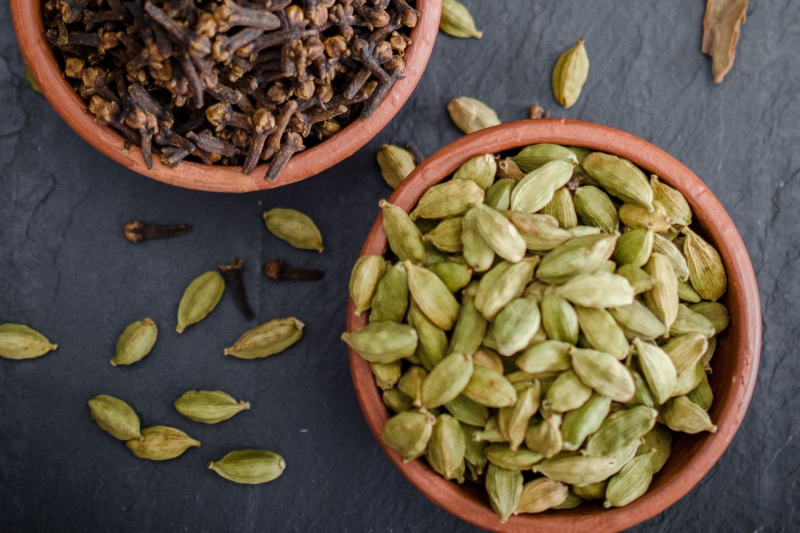
Image via Pinterest 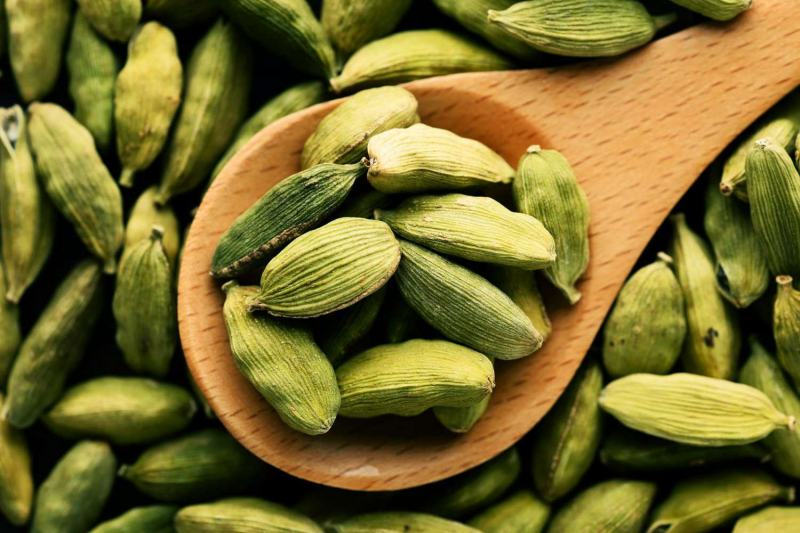
Image via Pinterest -
Clove permeates Indian cuisine, particularly in the northern and western regions, where it assumes an indispensable role in garam masala, an aromatic blend that embellishes curries, rice dishes, and meat preparations. Beyond its culinary prowess, clove imparts its essence to tea, desserts, and confections. Renowned culinary creations like biryani, korma, rogan josh, and chai owe their distinctiveness to the inclusion of clove.
Clove is more than just a spice, it embodies the essence of Indian culture and heritage. European traders, drawn by the allure of exotic riches, chased this treasured spice with zeal during their trips to India. It served as perfume, and a preservative all at the same time. Clove was intrinsically linked to religious rites, either as incense or a sacrifice to deities.
Clove shines brightly among the Indian spices, brightening both your culinary journey and your awareness of Indian heritage. It has an unusual ability to elicit feelings of warmth, consolation, and nostalgia. Infuse your next Indian dish with the entrancing flavor and perfume of clove.
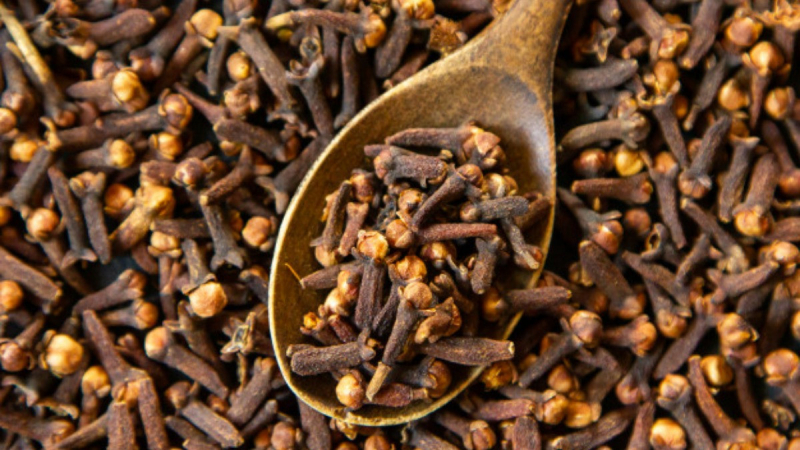
Image via Pinterest 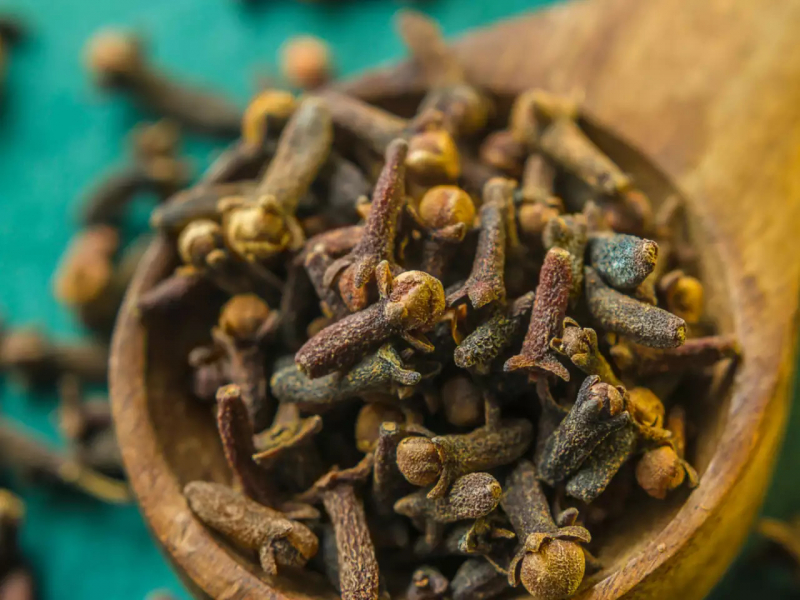
Image via Pinterest -
Mustard seeds are tiny, spherical, and dark brown or black in appearance. They are relatives of cabbage, broccoli, and kale. They have been farmed for thousands of years in India and are frequently utilized in a variety of regional cuisines. They are frequently roasted, cooked, or processed into a powder or paste.
Mustard seeds are not only tasty but also healthy. Protein, fiber, calcium, iron, magnesium, selenium, and antioxidants are all abundant in them. They are also anti-inflammatory, antibacterial, antifungal, and antiseptic. They can aid in the reduction of blood pressure, cholesterol, and blood sugar levels. They can also help with digestion, immunity, and infection prevention. Mustard seeds are a vital component of many well-known Indian cuisines, demonstrating their versatility and flavor. Sarson ka saag, Aloo gobi, Kadhi, and Mustard fish curry are a few examples.
In India, black mustard seeds are the most prevalent and commonly used. They have a spicy and fiery flavor that can stimulate the appetite while also clearing the sinuses. Yellow mustard seeds are milder and sweeter, and they are commonly used in Western cuisines such as mustard sauces and dressings.
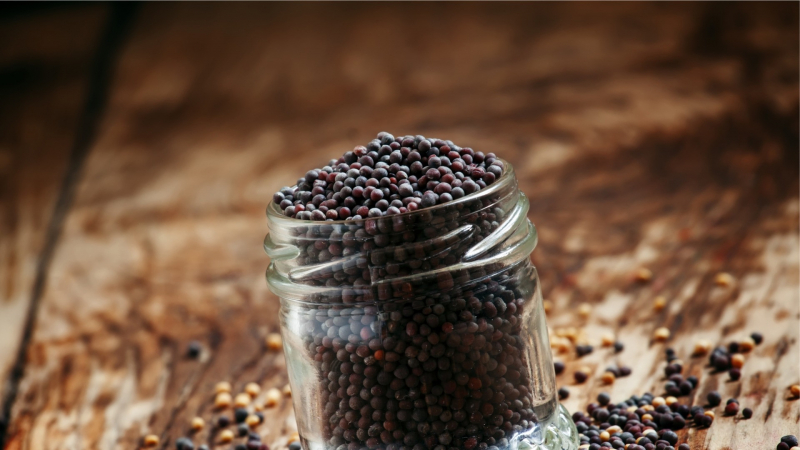
Image via Pinterest 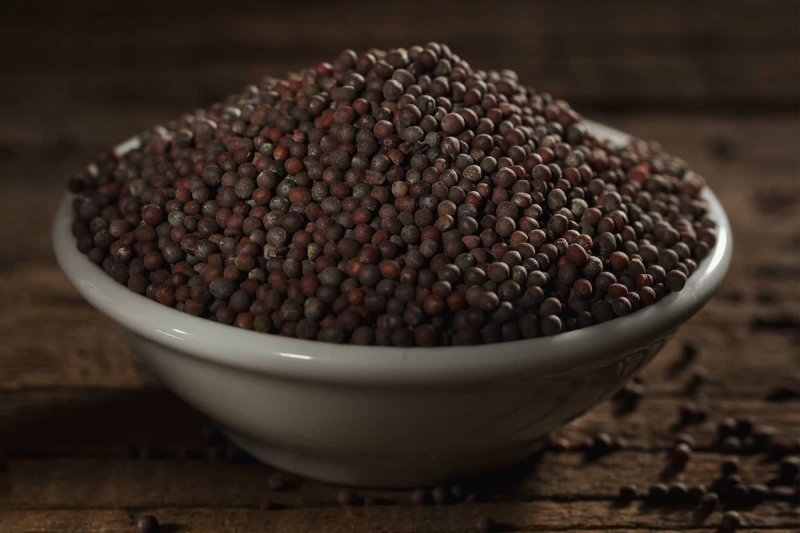
Image via Pinterest -
Garam masala technically means "hot spice" in Hindi, however, this does not refer to the blend's spiciness. According to Ayurvedic principles, it refers to the warming effect of the spices on the body. Garam masala is thought to improve health and well-being by balancing the three doshas (energy kinds) in the body.
Garam masala is used in a variety of dishes in Indian cuisine. It can be infused at the start of the cooking process to flavor the oil or ghee, or at the end as a finishing touch to enhance the smell and savor of the food. It can also be used as a seasoning on rice, yogurt, or salads. Chicken tikka masala, Dal makhani, and Paneer butter masala are some of the most well-known dishes that use garam masala.
Garam masala is not only delicious but also beneficial to your health. It can boost your metabolism, help your digestion, fight inflammation, lower your blood pressure, and prevent infections. It can also add a touch of warmth and comfort to your meals, especially during cold weather.
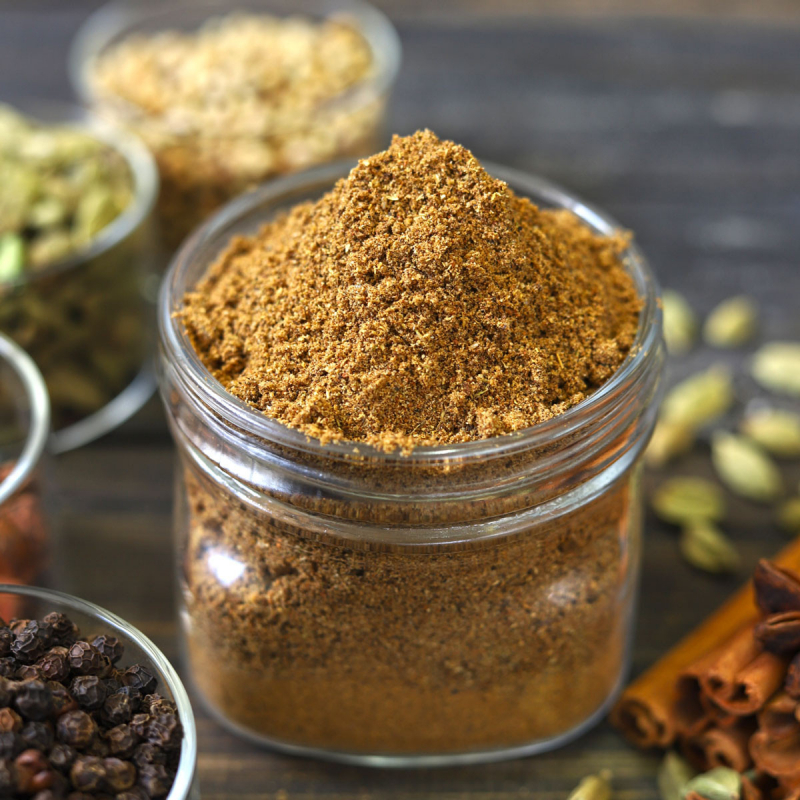
Image via Pinterest 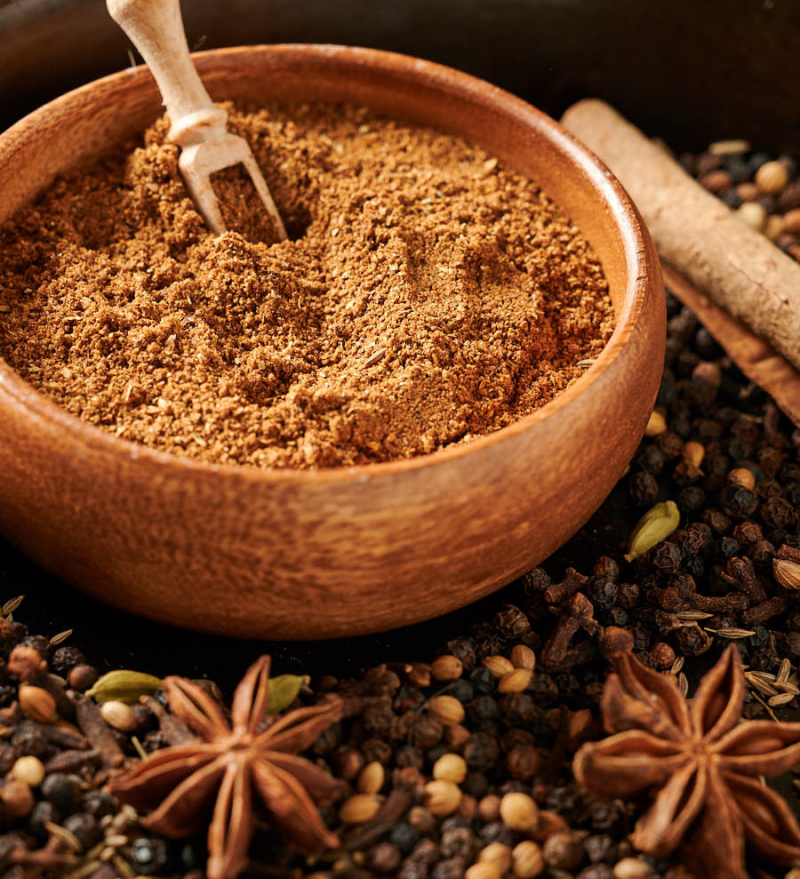
Image via Pinterest -
Saffron has an enigmatic flavor that is difficult to describe. Some claim its sweetness, floral aroma, and earthiness, while others claim bitterness, metallic tang, and musky overtones. Saffron's flavor is determined by its quality, quantity, and thorough preparation. Furthermore, saffron has a brilliant golden hue that can provide a striking tinge to culinary creations. Not to mention that saffron has an exquisite aroma that fills the kitchen with a welcoming and comforting fragrance.
Saffron has been used in the realms of India for millennia, with roots dating back to the ancient Vedic writings and the epic Mahabharata. It has traveled the Silk Road and been carried into India by Persian and Arab conquerors.
Saffron is used in a variety of Indian regional cuisines, including Kashmiri, Awadhi, Mughlai, and Hyderabadi, as well as Gujarati. It is widely used in rice-based dishes such as biryanis and pulao, giving them a festive appearance and flavor. It also appears in a variety of desserts, including kheer, halwa, rasmalai, and kulfi, adding a sense of grandeur and elegance. Furthermore, saffron is frequently used to enhance the flavor and opulence of savory foods such as curries, kormas, kebabs, and paneer preparations.
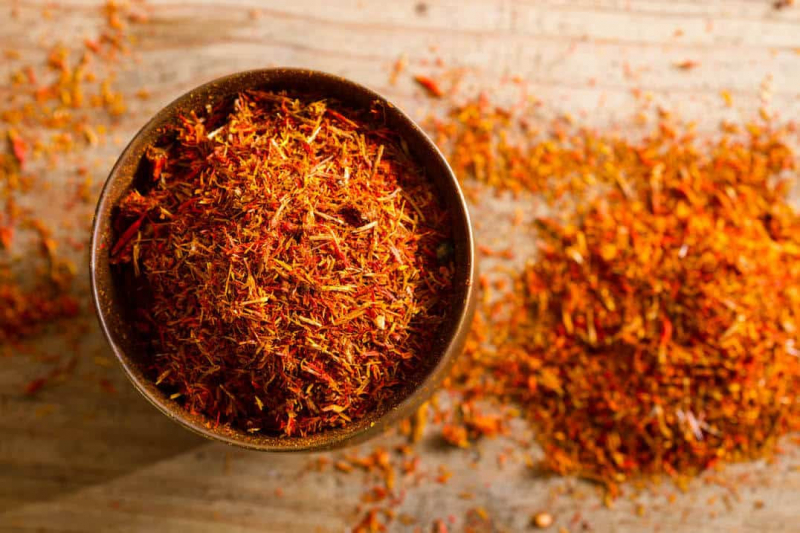
Image via Pinterest 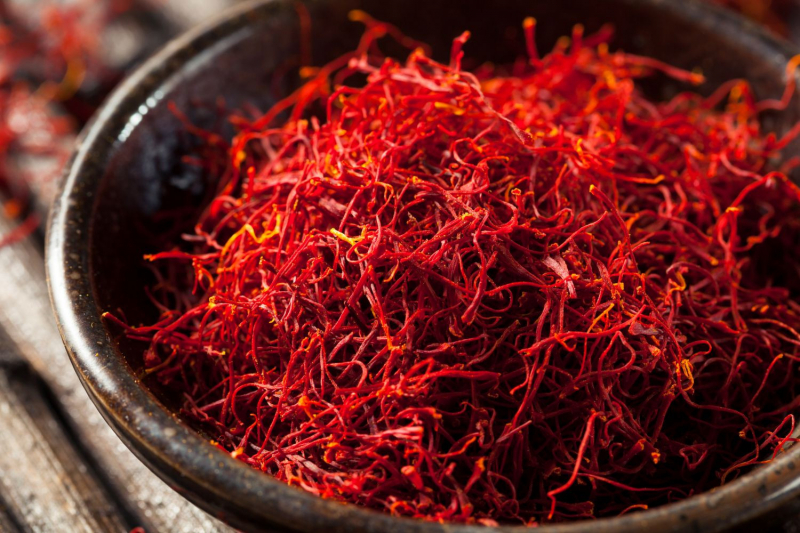
Image via Pinterest













